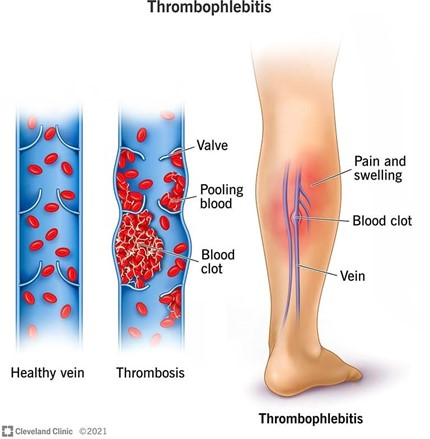A client is to be discharged from an acute care facility after treatment for right leg thrombophlebitis. The nurse notes that the client’s leg is pain free, without redness or edema. The nurse’s actions reflect which phase of the nursing process? Select one answer
Implementation
Evaluation
Outcomes identification
Assessment
The Correct Answer is B
Choice A reason: Implementation is a phase of the nursing process that involves carrying out the plan of care and performing the interventions and activities that were planned. It also involves monitoring the client’s response and progress, and documenting the outcomes. The nurse’s actions do not reflect this phase, as they are not performing any interventions or activities, but rather observing and measuring the client’s condition. Therefore, this choice is incorrect.
Choice B reason: Evaluation is a phase of the nursing process that involves measuring the outcomes and determining whether the interventions were effective in resolving or preventing the problem. It also involves comparing the actual outcomes with the expected outcomes, and modifying the plan of care if needed. The nurse’s actions reflect this phase, as they are assessing the client’s leg for signs of improvement or resolution of thrombophlebitis, and noting that the client is ready for discharge. Therefore, this choice is correct.
Choice C reason: Outcomes identification is a phase of the nursing process that involves setting measurable and realistic goals for the client’s health improvement or maintenance. The goals are based on the client’s needs, preferences, and values, and they are developed in collaboration with the client and the nurse. The nurse’s actions do not reflect this phase, as they are not setting any goals, but rather evaluating whether they have been met.
Therefore, this choice is incorrect.
Choice D reason: Assessment is a phase of the nursing process that involves collecting and analyzing data about the client’s health status, history, and environment. It also involves identifying any factors that may affect the client’s health or well-being, and forming a nursing diagnosis. The nurse’s actions do not reflect this phase, as they are not collecting or analyzing any new data, but rather reviewing the existing data and confirming the diagnosis. Therefore, this choice is incorrect.

Nursing Test Bank
Naxlex Comprehensive Predictor Exams
Related Questions
Correct Answer is B
Explanation
This is the observation that indicates that the UAPs need additional information about the turning procedure because it is incorrect and may cause complications for the client. The client who had a hip arthroplasty with prosthesis placement should not keep both legs straight and together while turning because this may cause dislocation of the prosthesis, nerve damage, or bleeding. The client should keep the affected leg slightly abducted and supported with pillows or an abduction device.
A. An abduction pillow is placed between the client's legs when positioned is correct and does not indicate a need for additional information. This helps to maintain proper alignment and prevent dislocation of the prosthesis.
C. A turning sheet used under the client for turning and repositioning is correct and does not indicate a need for additional information. This helps to reduce friction and shear forces on the skin and prevent pressure ulcers.
D. The UAPs keep their backs straight and knees bent when moving the client is correct and does not indicate a need for additional information. This helps to protect their own musculoskeletal health and prevent injuries.
Correct Answer is A
Explanation
Listening. Listening is the process of receiving information from a speaker and examining one’s responses to the message. It involves paying atention, interpreting, and evaluating what is being said. Listening is an essential skill for effective communication in nursing.
Reflection is incorrect. Reflection is the process of thinking back on one’s actions and experiences and analyzing what went well and what can be improved. Reflection helps nurses to learn from their practice and enhance their professional development.
Restating is incorrect. Restating is the process of repeating what the speaker has said in one’s own words to confirm understanding and show interest. Restating is a technique that can facilitate listening, but it is not the same as listening itself.
Clarification is incorrect. Clarification is the process of asking questions or requesting more information to clear up any confusion or ambiguity in the message. Clarification can help to avoid misunderstandings and ensure accuracy, but it is not the same as listening itself.
Whether you are a student looking to ace your exams or a practicing nurse seeking to enhance your expertise , our nursing education contents will empower you with the confidence and competence to make a difference in the lives of patients and become a respected leader in the healthcare field.
Visit Naxlex, invest in your future and unlock endless possibilities with our unparalleled nursing education contents today
Report Wrong Answer on the Current Question
Do you disagree with the answer? If yes, what is your expected answer? Explain.
Kindly be descriptive with the issue you are facing.
